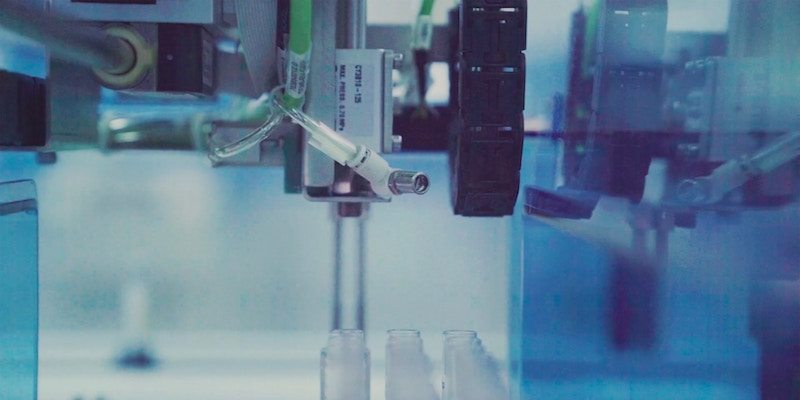Whether you’ve heard of Laboratory Information Management Systems (AKA "LIMS") and aren’t sure of their capabilities or what features and capabilities differentiate a LIMS solution from other laboratory R&D software systems – this guide is for you. This article comprehensively outlines fundamental features and capabilities in any LIMS system, “must-haves,” complementary features, nice-to-haves, and more.
Mandatory Capabilities For Any LIMS System
- Data Security: While this is often neglected in feature lists, data security should be your first priority to ensure that valuable IP is not lost. Ensure that any LIMS vendor you evaluate has a security certification, such as a SOC 2 Audit or an ISO 27001 certification, and should support standard security measures such as two-factor authentication. The system should support internal permissions through Role Based Access Controls (RBAC) to ensure that users only have access to data they should.
- Sample Management: This is generally considered the “primary” function of a LIMS system. A sample made in the lab should be tracked from beginning to end. Any LIMS system will advertise this capability, but what differentiates them is the features built around this
- Workflow Management: A LIMS system should be able to manage your workflows within a lab. For example, specific samples might undergo certain tests, with re-tests, approval processes, and notifications based on the type of sample and the results of the tests. The LIMS system should support configuring these workflows, with different request and approval types available for user groups and use cases.
- Compliance: a LIMS should help you achieve your compliance goals, be they ISO audits, GxP, FDA 21 CFR Part 11, or other regulatory standards. Metadata, such as users associated with each result, should be tracked, along with a full audit log. E-signatures should be natively built in for necessary workflows, and it should be impossible to change data that has been finalized within the system.
- Instrument Integration: When you run tests in the lab, the users should be able to follow a manual process of typing in results by hand, leading to wasted time and potential errors. Instead, data should flow automatically from the instruments to the LIMS system. This can occur via several methods:
a. Support for “Smart” equipment, where an API connection is used to send data directly to the LIMS
b. Support for an agent-based workflow, where an agent runs on your machines that connect directly to the equipment. This agent then integrates with the LIMS API directly
c. Support for file-based workflows, where the instruments and LIMS have access to a shared directory, and files are ingested as they are placed by instruments.
*For more details about the types of equipment integration possible, click here to access a PDF of "Uncountable's Instrument Connectivity Overview." - Inventory Management: Part of managing a lab is managing its inventory. A LIMS system should be able to manage the inventory for you, including location tracking, tying inventory usage to active experiments, associating inventory with barcodes, and automatic decrement when inventory is used.
- Software Integration Support: A LIMS system will not be the only software used within your organization. Make sure your LIMS system supports modern integration capabilities, such as a REST API. It should connect to Enterprise Resource Planning (ERP) systems such as SAP to better facilitate data exchange, such as placing finished materials in the ERP. Many other systems can be in scope for software integration, so the most important is a flexible approach from your vendor.
- Enabling Collaboration: Your team should be able to work together on your system of choice seamlessly. Two users should be able to edit the same request simultaneously, and global users should be able to work together on the same platform. Ensure that data is shared in real-time and that global features of the LIMS are supported - for instance, does the LIMS support all languages your team works in? Does it support all their scientific units?
- Barcoding: Any LIMS system should support Barcoding. Inventory, Equipment, and other items should have barcodes attached, letting you quickly jump to the page corresponding to the item you’re working with. This should tie back to the chain of custody and other auditing features, allowing you to understand how materials move around a lab.
- Training Management: Training management should be stored in your LIMS. You should be able to record possible certifications that users have and when their next scheduled training should occur.
Essential Features of a Modern LIMS Solution
While the above capabilities were traditionally considered mandatory capabilities of a LIMS system, modern platforms have evolved beyond these capabilities. A system that your team can use both now and in the future should support the following capabilities
- Integration with Formulation & Electronic Lab Notebook (ELN): If your team is doing formulation work, this should be built directly into your LIMS. Otherwise, you’ll run into the issue where inputs and procedures are recorded in one system typically the ELN, and outputs are recorded in the LIMS. This will make correlating the two very difficult and impossible to ask questions like “As we increase the amount of Ingredient A, what happens to Parameter B?”
- Real-Time Searching Capabilities: Just because the data is recorded in your system does not mean it’s accessible. Your system of choice should be able to filter by any criteria instantly. This should go beyond simple text searching into boolean and structured searching.
- Graphing & Visualization Capabilities: Your scientists should not have to use external programs to view their data. Plots like scatter, bar, line, and radar should all be natively supported, along with customizations to these graphs the same way you would in a standalone graphing tool
- Project Management: Similar to how you manage your lab within your LIMS, you should also be able to manage your lab projects. Your LIMS should support stage gates, project overviews, and executive summaries for progress reports. A leader within your organization should be able to use your LIMS to understand the progress of all necessary work.
- Calendar Management: A LIMS has task management built in, but these tasks still need to be scheduled. Ensure your LIMS supports a calendar view so you can understand when there is spare capacity, and work can’t be scheduled.
- Analytic Capabilities: Just like visualizations, users should not have to use a standalone program to take advantage of analytic capabilities. Standards like ANOVA analysis, correlation matrices, and factorial designs should be a standard part of any LIMS you purchase.
- Support For All Form Factors: Gone are the days when everyone worked on a desktop PC. A LIMS should support PCs, tablets, and mobile devices based on how the user works.
- Machine Learning & Artificial Intelligence: Artificial intelligence is one of the big new trends these days, and while it’s not the most important part of your LIMS, it’s something your vendor should provide. AI can be used to automatically detect outliers and suggest new experiments to try and predict results based on past performance. There are a lot of vendors without true expertise trying to cash in on this space, so ask your vendor what their team looks like and why you should trust what they are saying rather than believing their words blindly.
A LIMS is a critical part of any modern lab. With this guide, you better understand what features should be provided and can find the top-quality system for your team. With a powerful LIMS, your team can focus on the scientific process and be much more productive than with spreadsheets or a legacy system that doesn’t meet their needs. Visit our Integrated LIMS page to learn more about the benefits of a modern LIMS solution: www.uncountable.com/integrated-laboratory-information-management-system-lims










